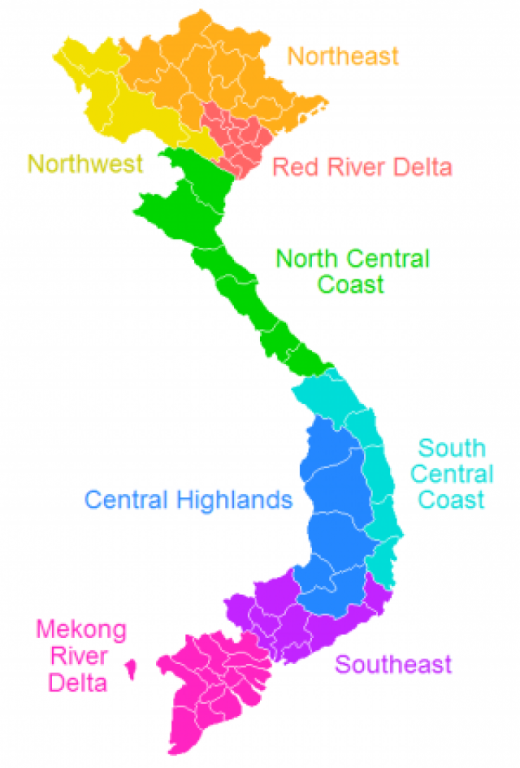Geography of Vietnam
Vietnam has often been described as a “pearl necklace” perched on the edge of Indochina.
Two baskets of rice hanging from each end
Vietnam is shaped like a don ganh, a traditional bamboo pole slung over a shoulder with one basket of rice hanging from each end. The two baskets represent the rice bowls of Vietnam, the Red River Delta in the north and the Mekong Delta in the south, both connected by a mountainous spine.
The long coastline and the numerous flowing rivers and streams carve up the land and provide Vietnam with volumes of water, the steady supply of two important food products: rice and nuoc mam, the fermented fish sauce.

Vietnam’s three main areas, the north, central, and south, have their own regional culinary variations, reflecting their different climates, cultures, and traditions.
Geography plays an important role in Vietnamese cuisine because the climate and the tradition of each region affect the availability of certain ingredients and spices, and thus the cooking style within each region.
Northern Regions
The flavours of Northern food are usually light and balanced, and the most used ingredients are those made from rice, ginger and dill are commonly used, as are some Chinese spices. In mountainous areas, where the climate can be cooler, people prefer cooking methods such as stewing.
Central Regions
The food of the central region is the spiciest in Vietnam and includes everyday home cooking as well as the elaborate imperial cuisine developed during the Nguyen Dynasty.
The local cuisines boast variety of different kinds of mam — sauce or paste made from fermented fish, shrimp, squid, crab, etc.
South Regions
In the lush, tropical south, there’s a stronger focus on salads and herbs, which are added to soups or used as wraps. The flavours are more diverse than in the North. Soy sauce and sugar are added to many dishes, much more than in other regions.
Read more about Vietnamese cuisine here.
